Blair Woodland Natural Area
A Town of Campton Conservation Property
1448 US Route 3, Campton NH 03223
About
The Blair Woodland Natural Area was given as a gift to the Town of Campton in 2002 to be kept as a natural area for wildlife and the general public for “low impact” uses such as nature study and enjoyment while walking, snowshoeing, cross-country skiing, picnicking, or fishing. The 17-acre natural area is maintained by the Campton Conservation Commission and includes several wetland areas, a regenerated pasture, approximately 1,000 feet of riparian habitat, and a mixed hardwood/coniferous forest. The natural area also features aspects of Campton’s rich historical legacy.
To protect the vegetation and minimize disturbance to wildlife, we ask that you observe the following guidelines:
- Please stay on the trails
- Please access the forest only near the kiosk in the parking lot on Route 3
- Foot traffic is welcome, but bicycles, motorized vehicles, and horses are prohibited
- Please practice low-impact, day use activities; Do not disturb plants, animals, or rocks, and pack out all trash
- Hunting, trapping, camping, and fires are prohibited
- Dogs must be leashed at all times
Scientific research is encouraged, with prior approval by the Campton Conservation Commission.
Thank you for protecting the Blair Woodland Natural Area
Map

Trail Guide – Points of Interest
Points of Interest are indicated by yellow number tags throughout the property1

2

3

4

5

6

7

8

9
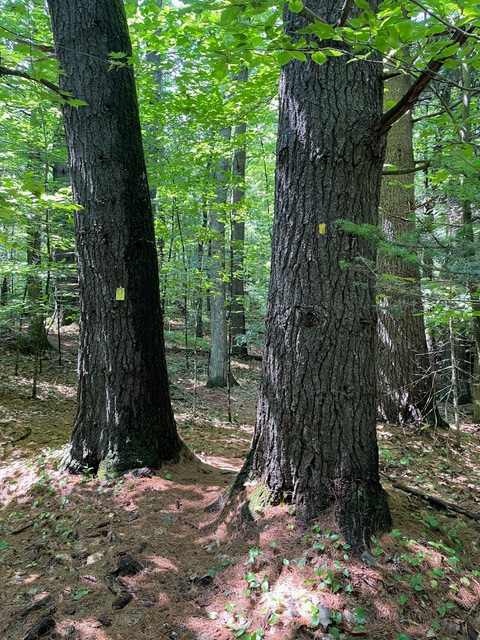 image Leah w/trees
image Leah w/trees
10
 image historic or present
image historic or present
11
12
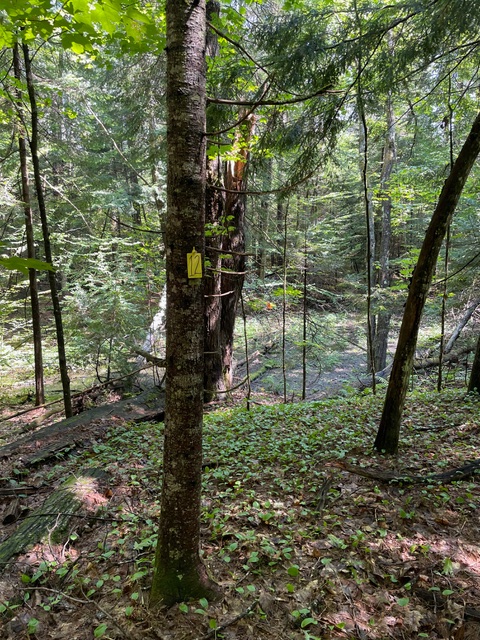
13

14

15
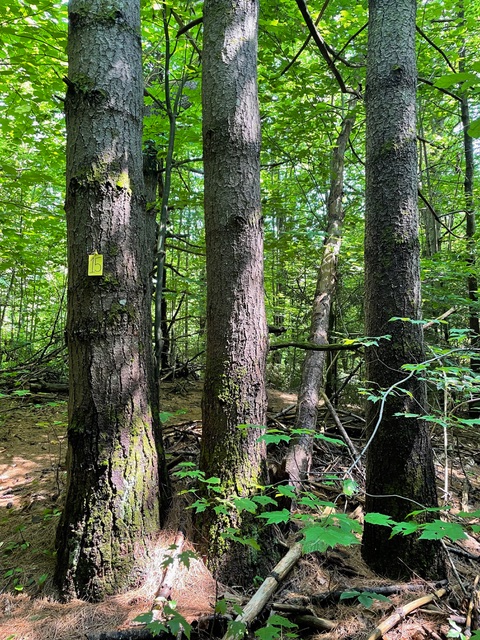
16

17

18
19

20

21

22
23
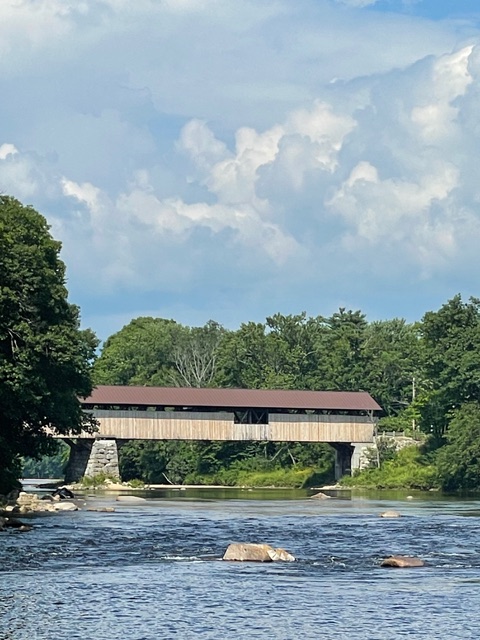
Visible upriver is the Blair Covered Bridge, a well-known piece of Campton history, framed by the river below and Mount Tecumseh (named for a Shawnee Indian chief) above. The original bridge was built in 1829 and destroyed by arson in 1868. The present span was built in 1869 and includes on original timber. At 292 ft., the Blair Bridge is the second largest covered bridge entirely within the boundaries of New Hampshire.
The immense boulder, split open by water freezing and thawing in crevices, is a good spot to sit and enjoy the view, while listening to the rushing water below. Notice the rounded boulder about 20 ft. from the shore. Many baptisms were performed on and near this boulder when Blair Chapel was active (located across Rt. 3 and a little north of the parking area), from 1889 to 1911.
24

25
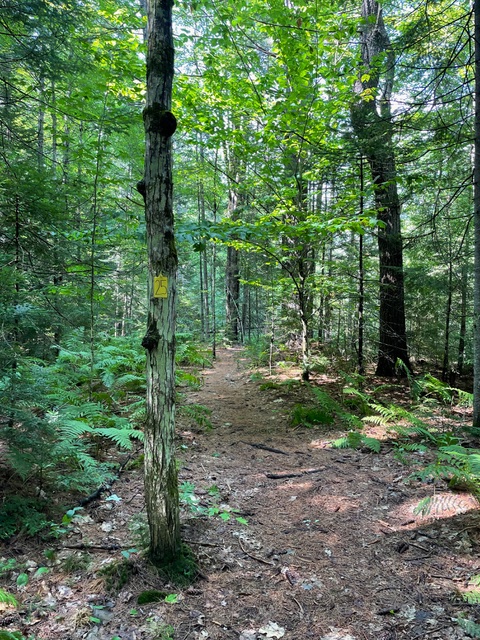
Observations
The following sections are items that were found and identified on the property by Melissa Greenawalt during her PSU Masters Study in 2005
Trees
Saplings/Shrubs
Herbaceous Plants
The following section are items that were identified on the property by casual sightings as well as summer surveys of visitors between 2003-2006 with the cooperation of Melissa Greenawalt during her PSU Masters Study in 2005.
Birds
Contact Us
Our Facebook Page
Find us on Facebook click here!
Campton Conservation Commission Email
Get in touch with us at conservationcommission@camptonnh.gov
Our web site
More information at http://www.camptonconservation.org
Mailing Address
Campton Conservation Commission
12 Gearty Way
Campton, NH 03223
Special Thanks To:
Leah Gray
Melissa Greenawalt
Jane Kellogg
Lester Mitchell
Scott Pulsifer
Denise Siraco
Walt Stockwell
Dr. Sarah Turtle
Campton Conservation Commission Members
Jessica Tabolt Halm
member since 2005
Rebecca Steeves
member since 2013
Jim Butler
member since 2020
Bill Copeland
member since 2022
Janet Lucas
member since 2023
Hope Eagleston
member since 2023